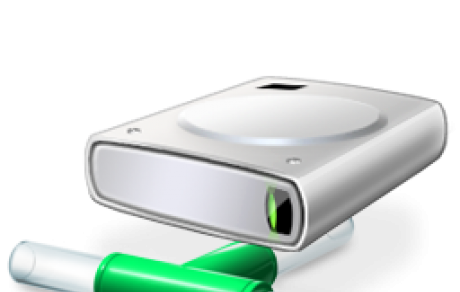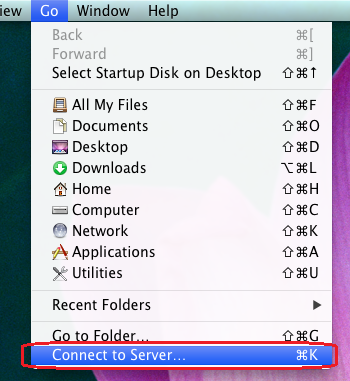-
Mapping Network Drives For Mac카테고리 없음 2020. 2. 7. 10:40

(via www.howtogeek.com) Mounting the Windows Share When you are in Finder you can click Go and Connect to Server or you can type Command + K to get to the same menu. In Server Address you will need to put the location of you Windows share with this format smb://server/share where server is the name or IP address of your Windows machine and share is going to be the folder or drive you want to mount. If your Windows share requires authentication it will ask you for that info here. Now if you have Connected Servers showing on your desktop, it will show up on your desktop an in Finder.
May 01, 2017 Mapping a network drive — also known as “mounting” a drive — allows you to create an easy access point to specific data on a network server using your own computer. Mar 20, 2017 - Mapping a network drive is the process of linking your Mac to a network attached storage device. Unlike installed hardware, OS X does not. Jump to Mac OSX - Mapping a shared folder in Mac OS X. Click Finder in. Type cifs: + the network drive path (e.g.
Making the Share Mount at Login To keep the share showing up when you have to log out seems pretty difficult. The internet is littered with ways to write scripts to allow you to do this. But OS X makes it pretty simple if you are just needing to add the share to your machine. You will need to be in System Preferences for this, which you can get to by clicking on the Apple Menu and then going to System Preferences. Then you will go to Accounts.
Once in Accounts, you will need go to the Login Items tab. Then you will just drag the share from your desktop or Finder window into the Login Items list. If your share requires authentication, it may be possible to add the username and password into your keychain with the check box in the authentication window. Some shares will not work with the keychain though.
This is pretty nice if you are working a lot between OS X and Windows, and need to move files between the two. To solve the issue of a Finder window showing the network drive each time you log in, you can check the Hide box in the Login Items list. This is the route I've gone. And it works. The downside, which I've not yet been able to resolve, is that it will open a Finder window for that share every time you log on.
I have a few shares configured this way for our Windows Home Server (Music, Videos, Photos, etc). And every time I log in, I get multiple Finder windows - one for each share. The Hide checkbox appears to affect Applications opened at login, but doesn't seem to change whether or not the Finder window is opened for a mapped volume. – Aug 10 '10 at 21:47. This is nice but not 100% working for me.
Map Network Drive In Windows 10
My boss bought a MacBook Pro for the first time and needs to have company shared folders mounted. We found as useful to put them to the Finder's favorite pane. But when laptop is out of the company network, Finder will clear unaccessible favorites and they are no more mounted even if they are in Login items. /// Probably another problem is that Login items are called upon the first login and not after each login, i.e.
After machine wakeup. – Jul 4 '14 at 6:41. I do have a NAS as well, and having switched to Mac about 2 years ago, I found this to be one of the main disadvantages of Mac. Windows is much better for handling network drives. Even on Linux things work out much better than on Mac. There is a way to automatically map a drive at logon (you can add it to the 'applications' to launch at logon, see for example ), but that isn't working very well for me (see e.g. The sleep issue below).

Other solutions are based on automator scripts, but it is all very clumpsy. The problems as I experience them:. indeed an application, like iTunes or MS Word, doesn't bring up (mount) the network share automatically when it is not mounted. also, when my mac awakes from sleep, sometimes the network mapping is lost (a dialog tells me 'server connection interrupted'); sometimes it keeps on working. I then have to wait for about 10 seconds before I can mount the share again. additionally, when using fast user switching the network share is mounted two times because of user permission issues. As a result, shortcuts to the share sometimes become unusable.
Another solution would be to cache all information from the share locally, like you can do on Windows Vista and higher very easily using Windows Sync (or Windows Offline files as it is also called). This gives the added benefit of a backup copy and ability to work offline.
However, no such thing is available on Mac (see ). So, this isn't an answer to your question, but I have done the following as a (bad) workaround:. I have put a shortcut to the network share on my desktop. I click it whenever I need to work with files on my NAS. I copied my music files to my local hard drive, on both our macs.
Mapping Network Drive For Mac
A very unsatisfactory solution though since these libraries then go out of sync. (The problem is worsened by iTunes not being able to watch a folder for changes). I am still on the lookout for a good media player for Mac. Amarok was promising, but I don't like their version 2 interface. What concerns photos (which are also on my NAS), I've ditched iPhoto and am using Picasa now, which is able to watch a folder for changes.
Mapping Network Drives For Mac Free
This way, I have only one photo library. If there is a better solution, I am very curious for it too.